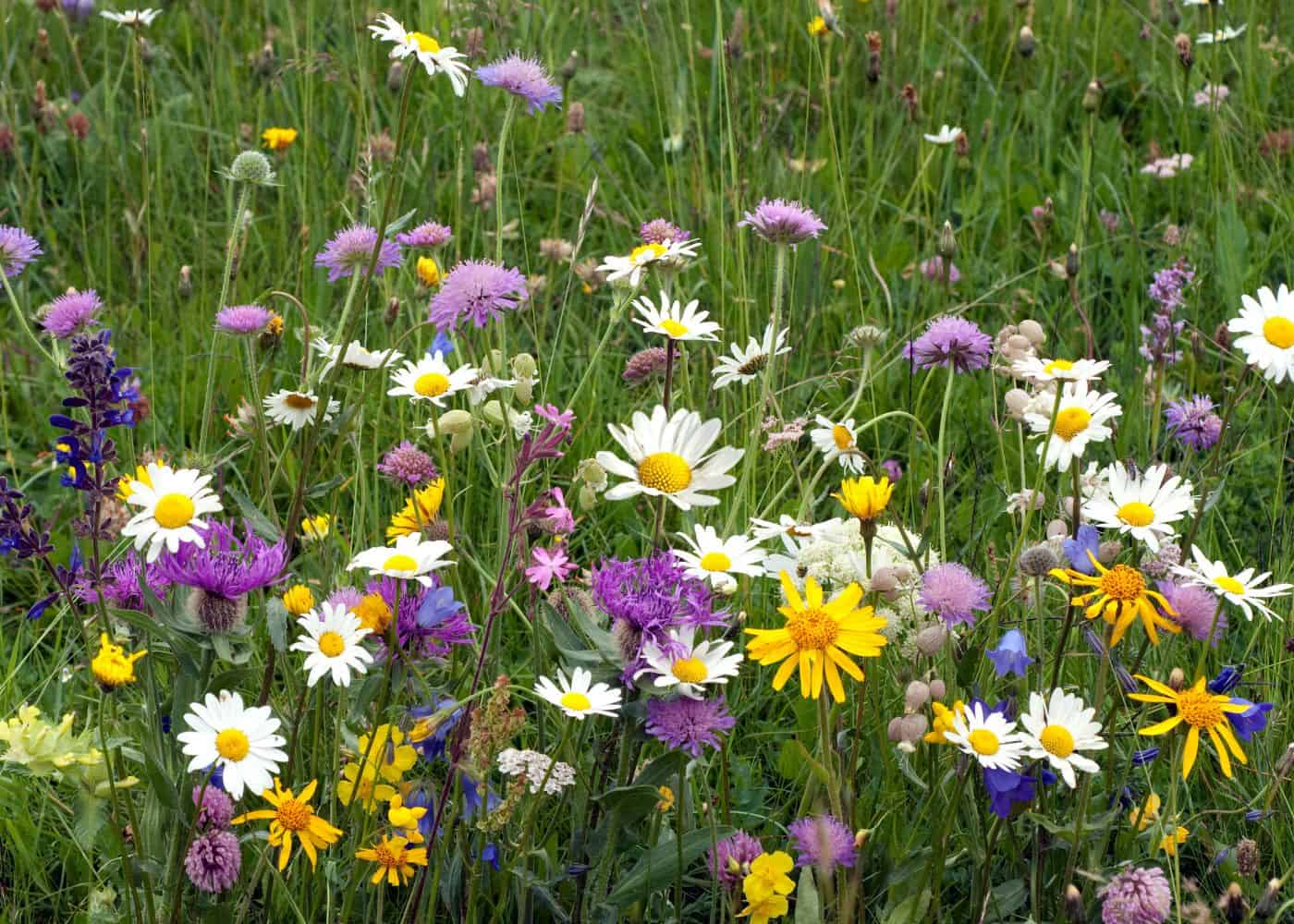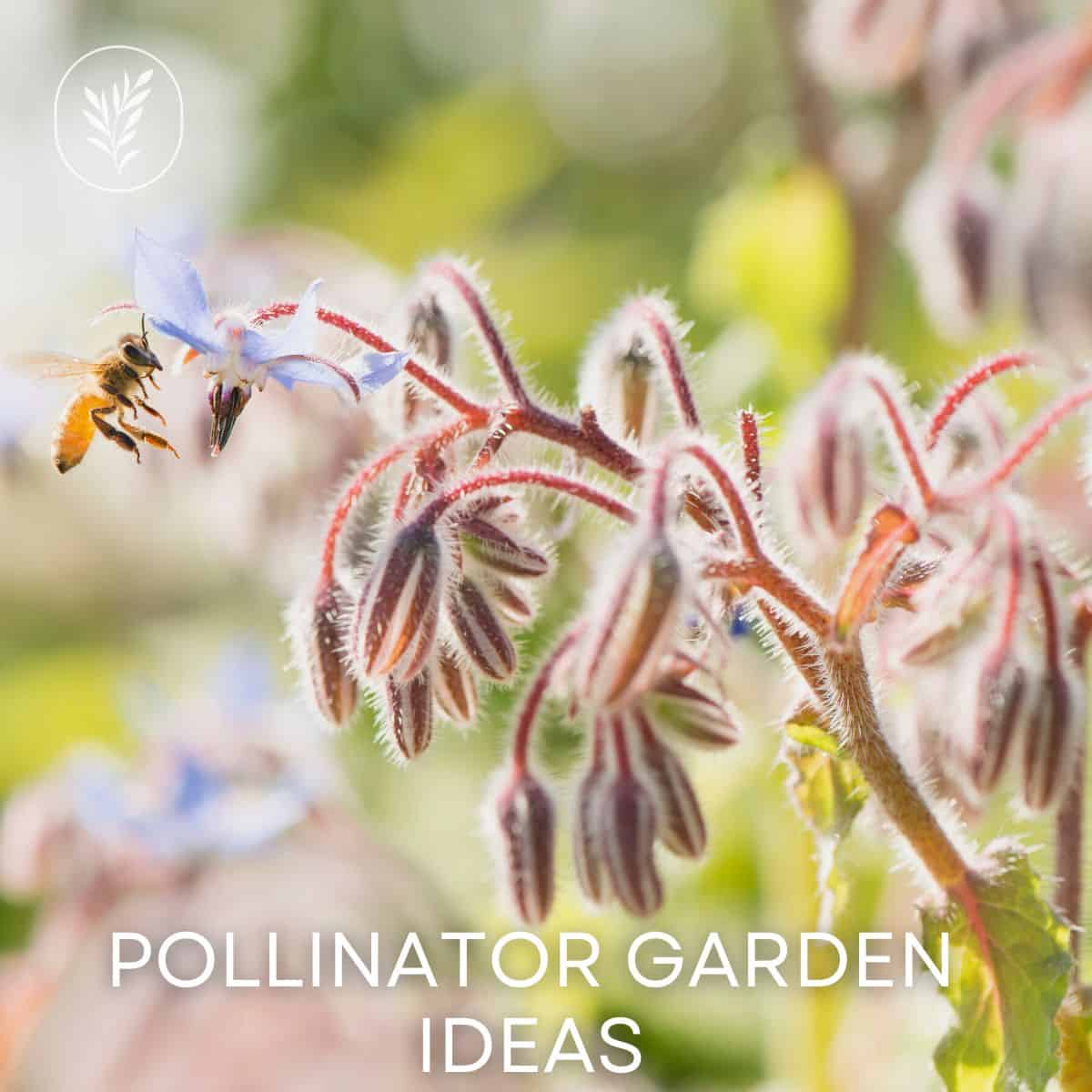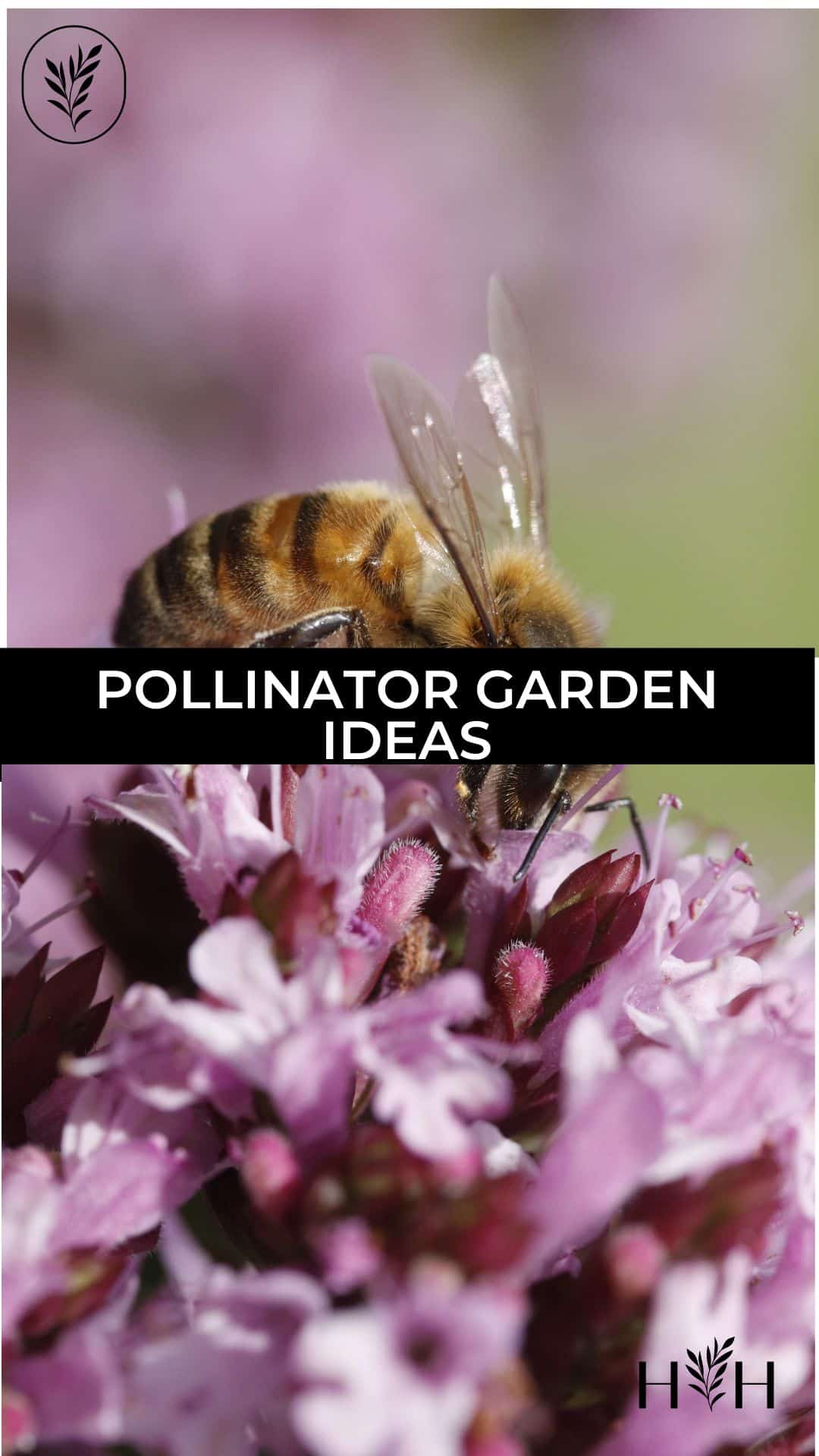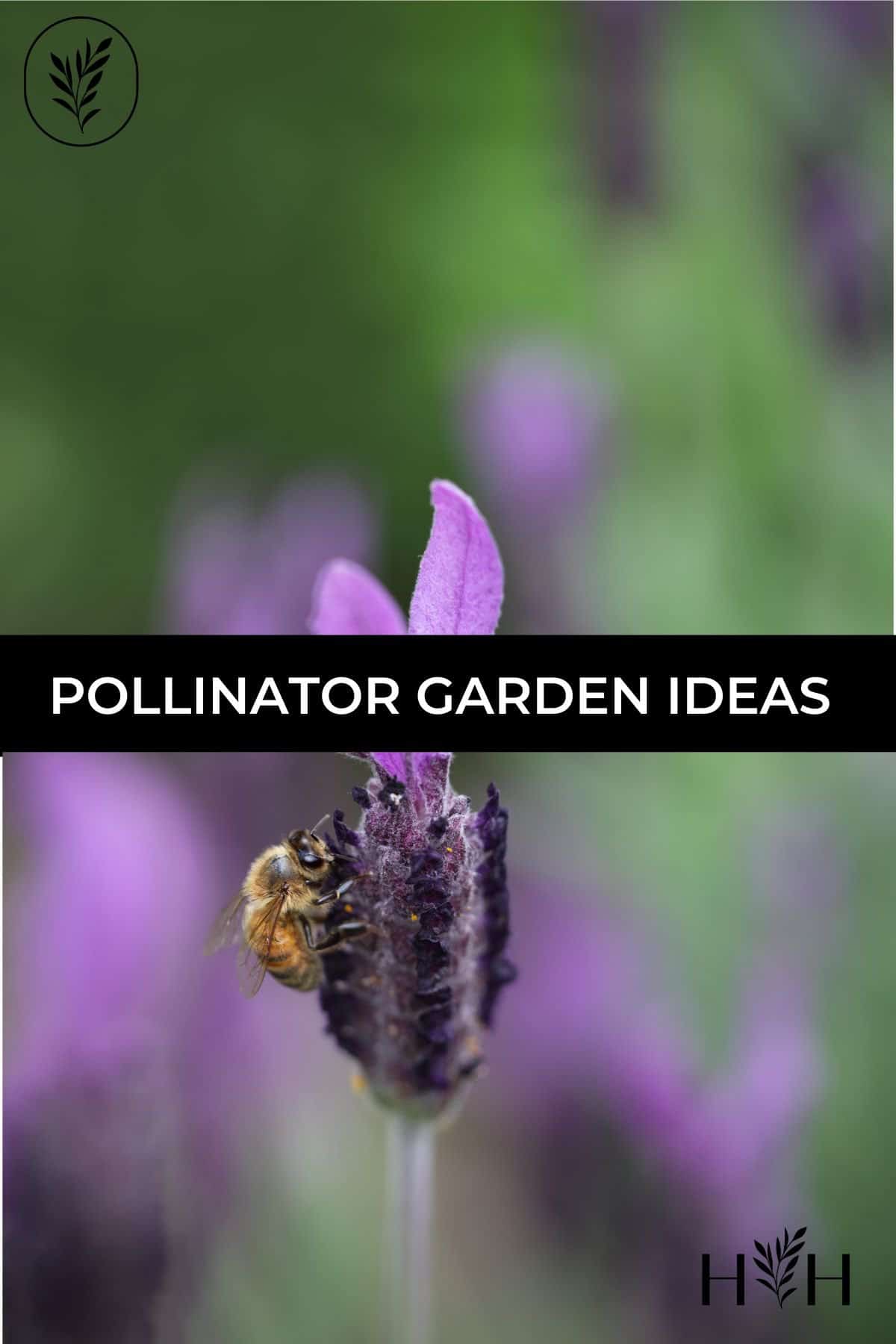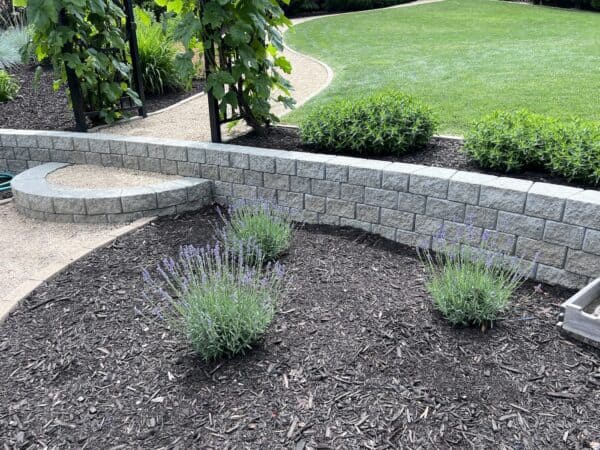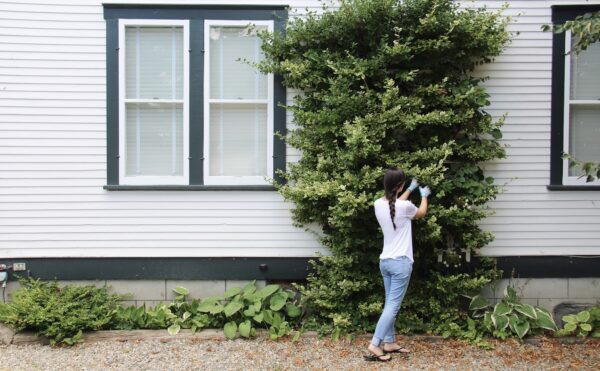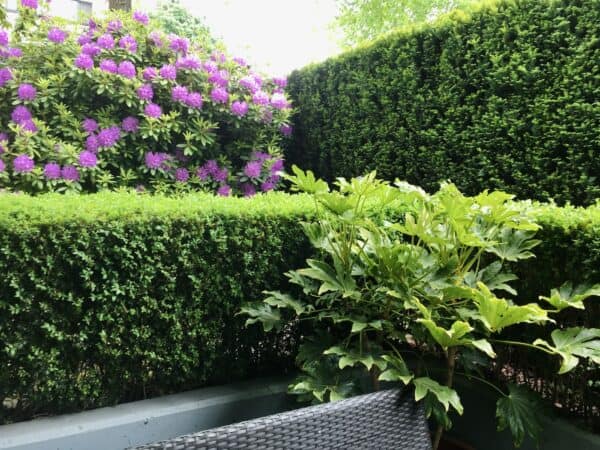Looking to plant your own pollinator garden but not sure where to start? Here are a few simple tips to get you started and to inspire you as you make your own garden to attract native pollinators. Those native pollinators will go on to provide food to the ecosystem.
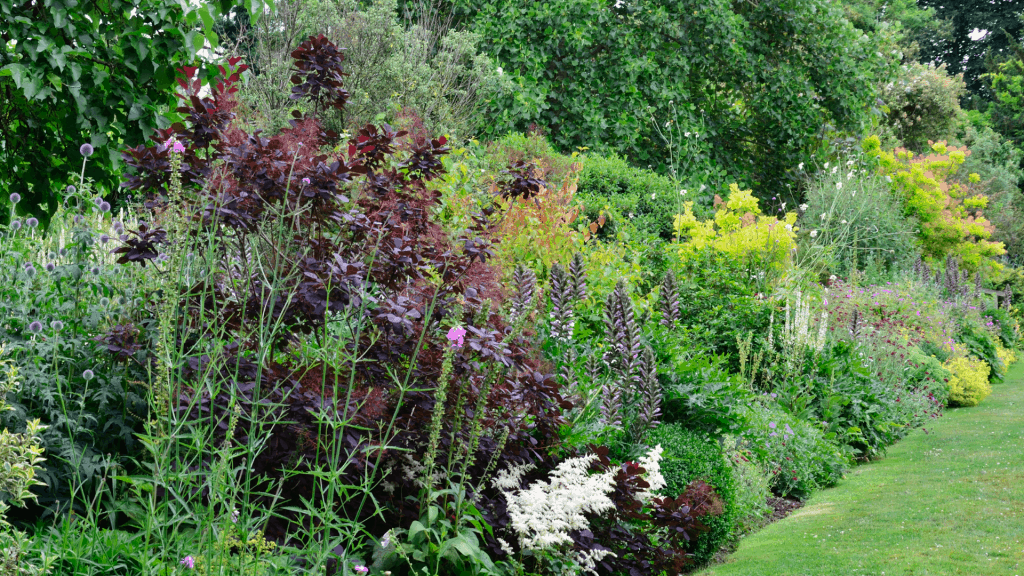
Pollinator gardens are packed with plants and living things that attract bees, butterflies, moths, flies, beetles, bats, and even hummingbirds. These gardens are crucial to the ecosystem to provide various plants for pollinators and wildlife. Planting your own pollinator garden can have an important impact on the environment in your area.
1. Start with a pollinator hotel
A pollinator hotel is a super fun way to dress up your pollinator garden and attract bees, butterflies, and other beneficial insects.
These cozy cavities are a great place for female insects to lay eggs. Those eggs will mature and stay dry and warm through the winter months.
Build your own pollinator hotel or buy one online and add it to your garden design. There are many hotel ideas online, and you may even find some at your local nursery.
2. Add the caterpillar’s favorite foods
To attract butterflies, such as blue morphos or monarch butterflies, you need to plant their favorite food in your pollinator garden.
Some of these foods may be obvious, and some are slightly unknown. Here are some of the caterpillars’ favorite treats that you can add to your garden design:
- Milkweed – a native swap plant that feeds baby Monarchs
- Alder Buckthorn – a tall, woody plant with dark blue/black berries on the branches.
- Bark and Twigs – Any type of flowering tree is a great snack for a caterpillar.
- Grass – if your garden is in your grassy yard, you should be all set.
- Hair, Fur, and Feathers – this one may be surprising. If you have a pet, try dropping some of their furs from shedding into the garden bed.
- Honeycomb – Caterpillars love the taste of honeycomb and will invade hives to get to the sweet treat.
- Flowers – Caterpillars love munching on the flowers and seeds of most flowering plants
- Leaves – Caterpillars mostly eat green leaves to quench their thirst. They don’t drink water, so leafy plants are important in your pollinator garden.
3. Plant hummingbird flowers
Hummingbirds aren’t just birds; they are also pollinators! To attract hummingbirds, try planting some of their favorite flowers in your pollinator garden. Here are some of their favorites for your garden design:
- Cardinal Climber
- Daylily
- Astilbe
- Bee Balm
- Blue Salvia
- Honeysuckle Vine
- Trumpet Vine
- Catmint
- Oriental Poppy
- Blue Globe Thistle
These make the perfect host plants for hummingbirds. These tasty treats will draw in hummingbirds and other beneficial insects and pollinators.
Any native plants with red or pink tubular flowers are also likely a magnet for hummingbirds. Here are more hummingbird garden ideas to add to your pollinator zone.
4. Add bee’s favorite flowers
Hoping to attract some busy little bees? These powerful pollinators are certainly worth attracting to your garden.
Try planting their favorite native plants like some of the following:
- Bee Balm
- Blue Globe Allium
- Oriental Poppy
- Coneflower
- Great Blue Lobelia
- Catmint
- Lavender
- New England Aster
- Chives
- Sunflower
- Goldenrod
- Borage
- Zinnia
The perfect flower for bees has to have the right flower shape and color. They like to land on broad and colorful flowers and prefer flowers in the blue and purple spectrum.
Interestingly, blue and purple flowers produce the most nectar of all flowers. Native bees will find their way to the blue and purple blooms in your garden.
5. Plant perennial plants for pollinators
Sometimes, you may see a decline in bees and other pollinators in your garden because they don’t love the habitat.
Include perennials in your garden that will attract pollinators at the first sign of spring. Some of these native plants and perennials include:
- Anise Hyssop
- Aster
- Bee Balm
- Blazing Star
- Milkweed
- Lanceleaf Coreopsis
- Showy Goldenrod
These all make great host plants for pollinators. Native bees and other native species will enjoy these delicious perennials as they stop by your native pollinator garden.
6. Choose a sunny spot for your garden
Most pollinators are energized by the sun, so be sure to plant your garden in the full or partial sun so those bees and butterflies can get plenty of energy.
Collecting pollen is tough work, so they need all they can get. In these sunny spots, you may also consider adding rocks and other resting platforms for your pollinators to rest as needed.
7. Provide nesting areas for pollinators
Your busy little pollinators will seek a safe haven in the garden. Open patches of bare soil and dead wood provide great homes for bees, wasps, and beetles.
Dead wood can include things like hollow logs or tree stumps. Insect houses can be purchased online as well to attract pollinators to the garden design.
8. Create safe watering areas for the insect pollinators
While those busy pollinators are working, they may want a refreshing drink. If you can, provide safe watering areas for them to land.
These may include a shallow bird bath or a saucer left out. Be sure to replace the water occasionally so they have fresh water to sip on.
9. Plant multiples of each plant
Having one plant will attract pollinators, but having duplicates will attract even more.
If you scatter the plants throughout the garden, pollinators won’t be able to find them as easily as if you plant them side by side. They will have plenty more pollen to collect and will return for more.
10. Choose plants with varying bloom times
This may seem pretty obvious, but it’s an important piece when trying to attract pollinators to your garden beds.
Choose plants that will bloom from early spring to late fall so that you have insects coming to visit almost all year long. Your pollinator garden will be the talk of the insect town because it will have pollen at the ready during all the warm months.
Be sure to avoid pesticides so as not to harm pollinators visiting your garden beds. Support pollinators in the natural world while creating your garden plan.


